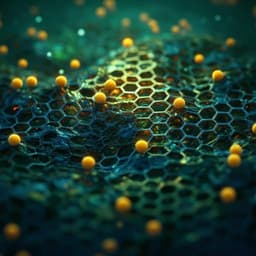
Biology
Magnify is a universal molecular anchoring strategy for expansion microscopy
A. Klimas, B. R. Gallagher, et al.
Discover how Magnify revolutionizes expansion microscopy by enabling the retention of biomolecules without separate anchoring steps. This innovative method provides remarkable 11x expansion and 25 nm resolution, revealing stunning nanoscale subcellular structures. Conducted by a team of experts from Carnegie Mellon University and Brown University.
Playback language: English
Related Publications
Explore these studies to deepen your understanding of the subject.







